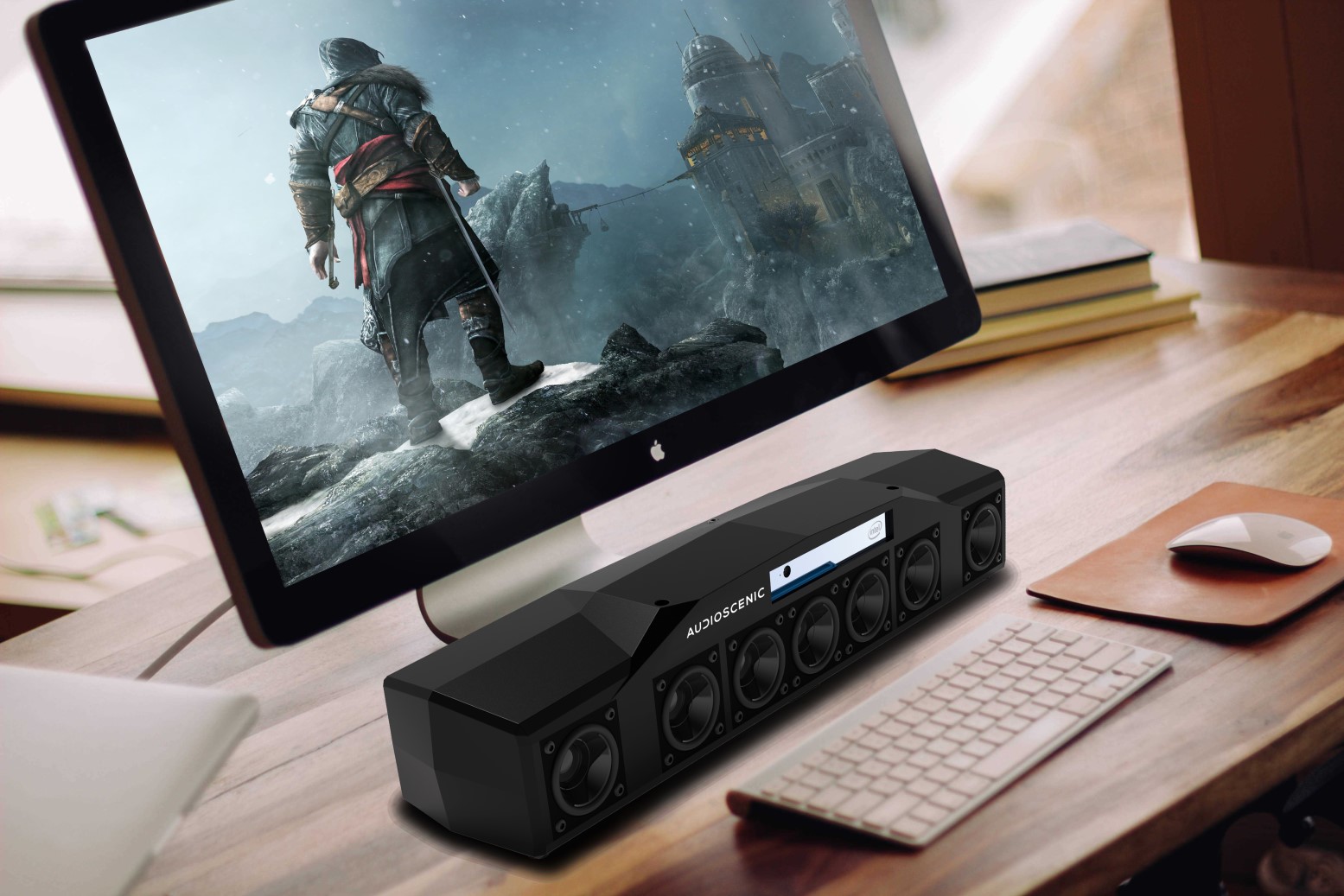Private Equity
SME
6 minutes
29/01/2021
Audioscenic - changing the way we experience audio
For gaming fans, holiday season 2020 will be remembered for the release of the latest generation of games consoles from industry giants Sony (PS5) and Microsoft (Xbox Series X) if they were lucky enough to get their hands on one.


Background
For gaming fans, holiday season 2020 will be remembered for the release of the latest generation of games consoles from industry giants Sony (PS5) and Microsoft (Xbox Series X) if they were lucky enough to get their hands on one. These consoles not only provide cutting-edge graphics, faster loading times and more immersive feedback but also represent a quantum leap forward in audio technology compared to their previous iterations.
Both Sony and Microsoft have equipped their consoles with dedicated 3D audio chipsets with the aim of providing a more immersive audio experience for gamers. Until recently, 3D audio has been the preserve of dedicated audiophiles with deep pockets. However, if the sales of the previous generation of consoles are anything to go by, nearly 200m households worldwide will have access to 3D audio content by 2025. But why has 3D audio lagged VR and other visual media?
This is in no small part due to the complex way in which our ears and brain work together to discern the direction of a sound. Our brain uses subtle cues, including volume, timing and pitch to identify the area in 3D space from which the sound originated. Sound is also highly personalised with the size and shape of a listener’s head and outer ear dramatically altering the sound that reaches our eardrum. To make things even more complicated, sounds coming from different directions interact with the body in different ways!
Given the complexity and sensitivity of a human’s sense of sound, it is therefore not surprising that existing 5.1 and 7.1 surround sound systems, which consist of a series of speakers located in pre-determined positions, do not create a truly 3D soundscape.
So, how is it possible to accurately replicate ‘true’ 3D audio using consumer electronic devices?
Incredibly, the complex interaction of a sound wave with a human body can be accurately modelled mathematically through a “Head Related Transfer Function” (HRTF). By applying this HRTF to the sound signal, it is possible to ‘trick’ the brain into thinking the sound has come from any location in three-dimensional space, rather than a point source (for example, a speaker unit) by just using a two-channel signal that is rendered to left and right ears of a listener. While this technique sounds relatively straightforward, it is actually a very complex mathematical problem, in part because it is difficult to know the exact location and orientation of the listener’s head, and hence the exact HRTF required to replicate the 3D effect.
Due to the complexity of the challenge, audio equipment manufacturers have initially focussed on implementing 3D audio into headphones, where audio inputs can easily be split into the users left and right ears thus avoiding the deleterious effect of ‘crosstalk’ between the left and right channels. Crosstalk is a common but difficult to solve issue which has plagued previous attempts to achieve loudspeaker-based 3D audio reproduction.
However, there are many applications where users either cannot or will not wear headphones. These include family home cinemas, public displays and automotive infotainment. Therefore, for 3D audio technology to be widely adopted by the market, this technical challenge needs to be overcome.
Audioscenic technology
FWT’s latest investment, Audioscenic, has solved this problem through the development of Virtua, a patent-protected software solution which uses head-tracking technology to accurately monitor the position of the listener, and beams separate sound waves to their left and right ears. Virtua overcomes the limitations of existing 3D audio-enabled loudspeakers, which use a sharply defined and inflexible “sweet-spot” which the listener must remain within.
Audioscenic Virtua delivers a natural 3D audio experience which does not suffer from crosstalk, does not require the user to wear headphones and does not confine the listener to a small sweet-spot. The flexibility and adaptability of Audioscenic’s technology means it can be used in a wide range of applications including gaming and TV soundbars, laptops, smart speakers, public displays and eventually passenger vehicles.
Audioscenic first demonstrated a prototype soundbar to hardware ODMs at the Consumer Electronics Show (CES) in 2019 and has since been working with several ODMs and OEMs to bring the technology to market through a software licensing model. The first products which benefit from the Virtua technology are expected to hit the shelves in Q3 2021.
Audioscenic’s technology was developed by founders Dr Marcos Simon and Prof. Filippo Fazi at the world-renowned Institute of Sound and Vibration Research (ISVR) at the University of Southampton. The company is now led by audio industry veteran David Monteith (CEO) who has grown and sold three audio IP licensing businesses over the last 20 years.
Market Information
As evidenced by the release of the Playstation 5 and Xbox Series X, the direction of travel for the uptake of 3D audio is clear and comparisons can be drawn to the adoption of HD and subsequently 4K TV. For example, streaming services such as Amazon Prime Music and Netflix are continually adding more 3D audio content to their sites and increasingly, the limiting factor to adoption of the technology comes from compatible hardware rather than 3D audio enabled content.
Foresight William Technology’s value add
FWT is delighted to have led Audioscenic’s Series A funding round alongside existing investors IP Group. FWT’s investment strategy is to leverage the financial and commercial experience of Foresight, along with the technical expertise of WAE, to help the portfolio companies finish their technical development, enter the market and grow rapidly.
WAE has already started work with the Audioscenic team to put in place a robust IP strategy which ensures value is captured in the business. WAE is also helping Audioscenic to explore opportunities in the Automotive and driving simulator sectors. Initial applications being explored include automotive infotainment, ADAS and driver warning systems and communications.
We are excited to have joined Audioscenic at what is a pivotal point not only in their company journey but also in the growth of the 3D audio market and look forward to working with David and the team. We are confident that their future success will be music to our ears!
If you would like further information or to discuss an investment opportunity, please contact us on +44(0)20 3667 8199 or email sales@foresightgroup.eu.
If you would like to learn more about how we can help support you to achieve your business ambitions, we’d love to hear from you. Please contact us on 020 3367 8100 or email peinfo@foresightgroup.eu.